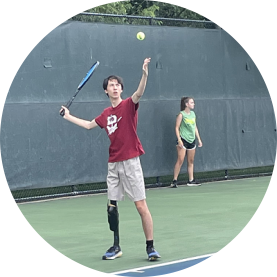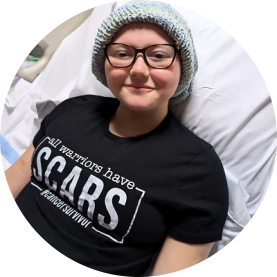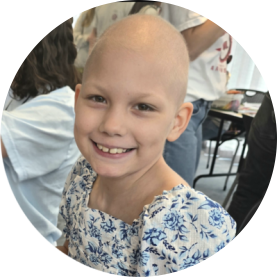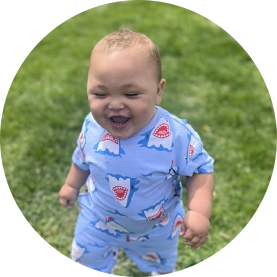- Acute Lymphoblastic Leukemia (ALL)
Click the images to see them larger above!
Learn more about
Acute Lymphoblastic Leukemia (ALL)
Get the facts about Acute Lymphoblastic Leukemia (ALL) and how our research projects are making a difference.
Learn More »Hannah is a very happy, active, energetic girl who loves pink, purple, sparkles, soccer and dance. When she was 8, she hurt her foot in gym class. It didn’t seem broken, but it also didn’t get better. A few weeks later Hannah was still limping. Hannah’s pediatrician didn’t think it was broken, but a month later, it still hadn’t healed and it was interfering with spring soccer – Hannah couldn’t run fast enough to be an effective player. Nothing showed up on the x-rays, and an orthopedic doctor referred Hannah to physical therapy.
By then Hannah’s back hurt too, and the physical therapist said that an active 8-year-old shouldn’t have that kind of pain and urged the family to go back to the orthopedic doctor. Hannah had blood tests, spinal x-rays and a nuclear bone scan and her family was told the results would come back in a week.
Before the results even came back, Hannah woke up one morning barely able to move, shaking, sweating and screaming in pain. At CHOP’s ER, doctors examined Hannah’s spinal x-rays, which showed compression fractures on multiple vertebrae. They repeated the lab work done the week before, since they couldn’t access it, and unfortunately it showed that Hannah had leukemia.
Hannah started on chemotherapy and oral steroids two days later after a bone marrow biopsy confirmed the diagnosis of ALL (acute lymphoblastic leukemia). At first she was placed into a standard risk category and put on a protocol that included multiple spinal taps with chemo into the spinal fluid, oral steroids and chemo and multiple IV chemos. Unfortunately only 2 weeks into her treatment, cytogenetic testing on her leukemia cells indicated that she had Hypodiploid leukemia meaning that the cells had far fewer chromosomes than a typical cell. This meant that she was elevated to high risk status, and had to have harsher chemo and a bone marrow transplant. This resulted in many hospitalizations, including a solid month spent in the hospital due to low counts and fever.
Hannah then underwent a bone marrow transplant, which involved total body irradiation, intense chemo and finally the transplant (from an unrelated donor). This was followed by almost a month in the hospital and six months of strict isolation. Her recovery went well despite some Graft vs. Host Disease (GVHD) for which she is still being treated for.
Hannah’s Mom dreams that Hannah will grow up and live a long life. Even though Hannah is happily in remission, she still has to visit the clinic weekly for appointments and cancer is still a part of her life.
The family has attended the ALSF Childhood Cancer Symposium and plans to attend again the future. Rachel, Hannah’s Mom, knew about Alex’s Lemonade Stand Foundation before Hannah was diagnosed, but, she wrote, “I had no idea how grossly underfunded childhood cancer research was. That is why I will forever be a childhood cancer advocate and make it known that organizations like ALSF make a difference in so many kids' lives.”
Hero Quote: "Don't judge someone by how they look because they may be going through something that you know nothing about." -Hannah McStay
Information provided by Rachel McStay, Hannah’s Mom
April 2014
Donate in Honor of Hannah Today!
Your donation helps to fund critically-needed research to find better treatments and cures for children with cancer.





